As I’ve said many times, it often takes a mere photograph to grab my attention, and to remind me of something I’ve neglected. For instace, this one.

This was posted in August by blogger compatriot (and all-around great guy) Eric of One Man’s Tea Journey. In the spring of 2019, he paid a visit to two US-based tea gardens—one in Alabama and one in Mississippi—and recorded the experience for posterity. I have no good excuse for this; somehow this article slipped my notice. His photographic reminder, however, didn’t. I voiced my envy.
His unexpected response to my textual salivation was to . . . send me two teas grown in Alabama. (Pretty sure he was already aware that I had sampled the heck out of the Mississippi tea garden.) That was not a response I had expected, nor was it one I was too gracious to refuse. Although, I did offer to send something in return, and that offer still stands; just so we’re clear.
The Fairhope Tea Plantation is located (obviously) in Fairhope, Alabama. Quick’n  dirty version: the garden was founded in 1979 from the remnants of an old Lipton test plot. From three plants that survived a haphazard bonfire, horticulturalist Donnie Barrett started a tea garden that would later expand to 61,000 plants of various cultivars. He experimented with making his own tea in 1984 after a visit to China, and pretty much had to learn everything from scratch.
dirty version: the garden was founded in 1979 from the remnants of an old Lipton test plot. From three plants that survived a haphazard bonfire, horticulturalist Donnie Barrett started a tea garden that would later expand to 61,000 plants of various cultivars. He experimented with making his own tea in 1984 after a visit to China, and pretty much had to learn everything from scratch.
If you want to read the plantation’s full story, go HERE.
Information exchange, particularly in regards to tea cultivation and production, wasn’t as willingly exchanged as it is today. Since then, with his scientific background, Barrett has experimented with growing and processing techniques. His efforts first caught my attention in the spring of 2013 when young tea upstart Jason McDonald—of that Mississippi garden I mentioned earlier—name-dropped Barrett, and his efforts to perfect a viable American tea plant cultivar.
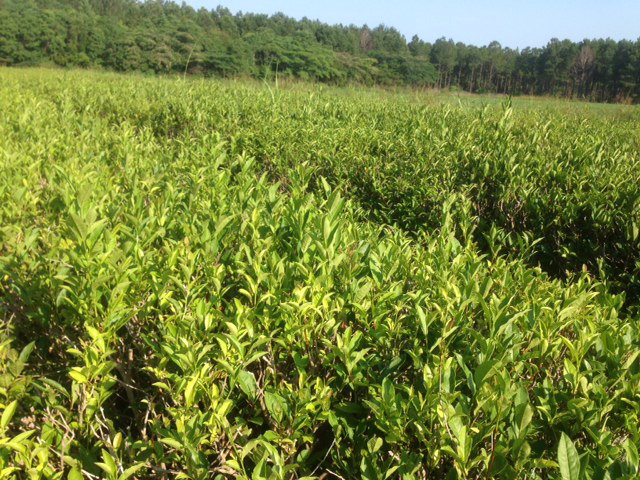
For some reason, though, I spaced exploring this plantation any further. Probably because the tea wasn’t easily accessible. Donnie Barrett only sold tea from the garden property, which he and his wife reside, and only recently just started wholesaling to local grocers. If I ever had a chance to try the tea, it was going to have to be through Southerner tea friends. Enter Eric!
A week or so later, two teas arrived on my doorstep. And by “doorstep”, I mean my local Postal Annex. Even more surprising was how much he sent; at least 25g of each. Or that’s how it looked to my thirsty eyes.
My original “plan” was to set aside a day off to explore both. That notion was immediately abandoned when I had an impromptu session with both teas after returning home from a tea festival. It was 11PM
For both, I opted with a gongfoolish preparation. I know, I know, that seems to be my default lately. Whatever, I don’t care. It’s my life, dammit! I went with boiled water, a tiny (4ml?) gaiwan, two grams of leaf per rotation. And then I just kept sippin’. Didn’t really pay attention to steep times; turns out I didn’t really have to.
Black Tea
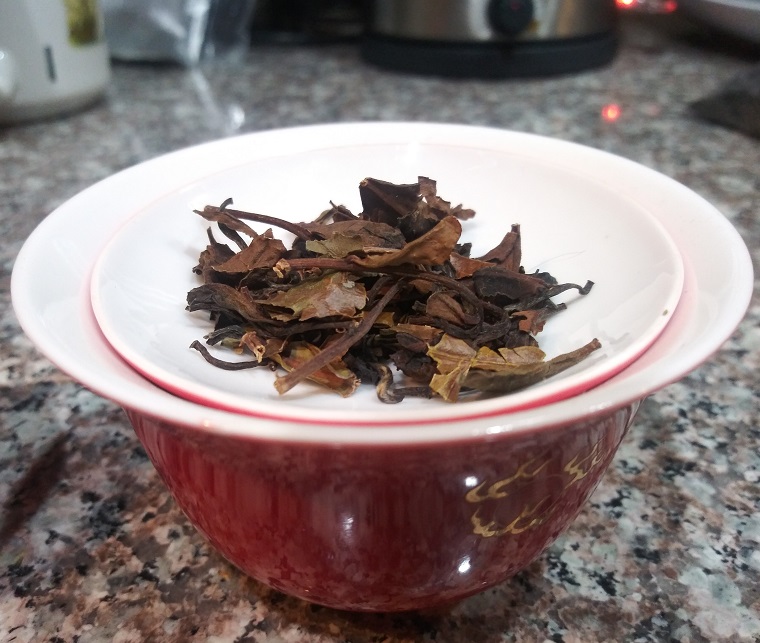
The leaves were rough and rustic – BOP-ish cut – with a light aroma of maple. For brewing, I first approached it with boiled water at three minutes, and that turned out to be too light. So, I pushed it to five minutes on a second and third infusion.

Even then, it was still light, but still colored to a “hong cha” amber, and an aroma very indicative of Ali Shan black teas I tried. (Although, not as floral or buttery.) The most prominent note I got wasn’t exactly grapes … nor was it raisins. But somewhere in between; like a grape-raisin, partially browned hybrid monster.
I dug it, hence the wordier-than-usual post.
Oolong
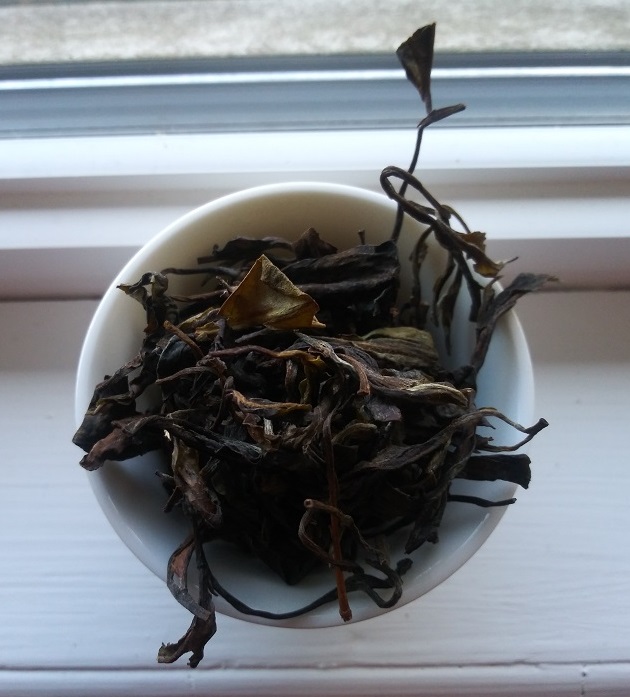
The first thing I have to mention is how surprised I was by the leaf material for this, especially after trying the black tea. Instead of cut leaf pieces, most of the batch was full-on whole leaves. The oxidation level was also more consistent than the black tea. My favorite part, the almost-bug-bitten-grapy aroma the dry leaves possessed. I could go on . . .
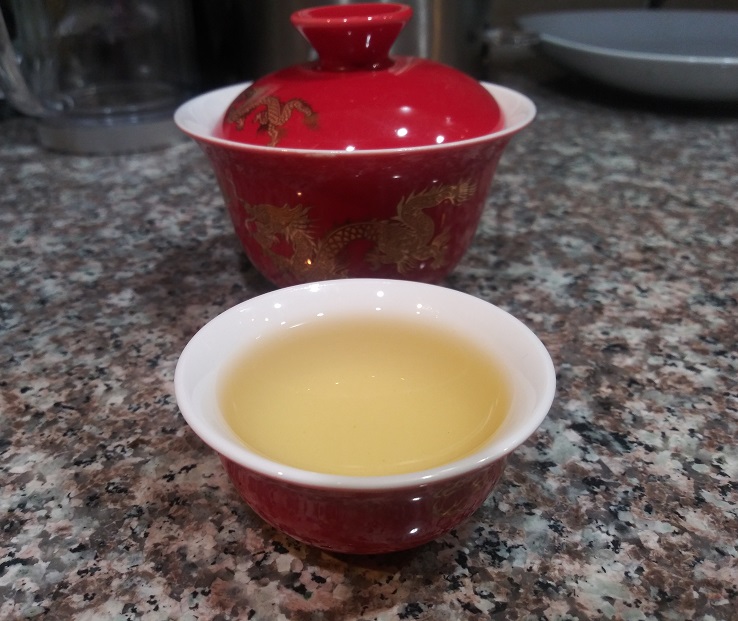
This sucker worked at my speed; steeped forever – twice – and brewed up well in spite of my forgetfulness. Taster “notes” – maple-glazed grapes. Sure, we’ll stick with that for now. I wish I had more to say here, but further taster notes would just echo the above comments. This stuff was great. Maybe not as nuanced as other oolongs out there, but—like Al Pacino—it knew it’s one note performance, and it played it hardcore.
HooooAAAA!
It also gongfu’d pretty darn well, as I found out.
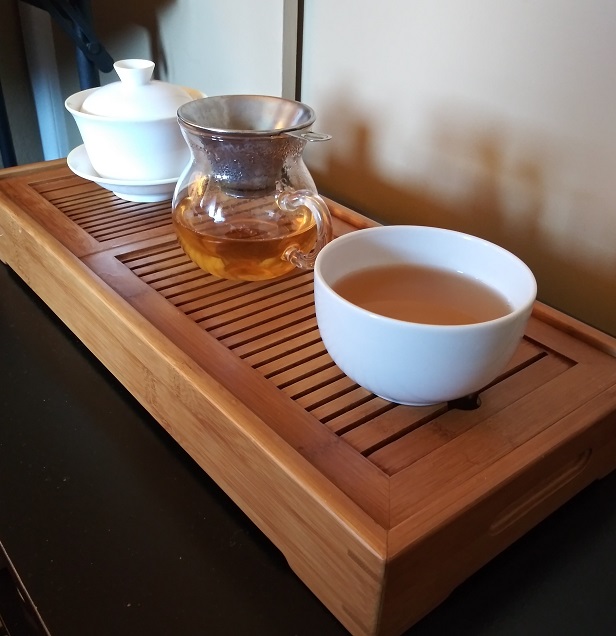
Just today.
The black tea was designed, from what I gathered, to be the perfect, cozy daily drinker. And that’s what I’ve used it for since my initial tasting. Oddly enough, though, I’ve since revisited the oolong more, even brewed up some leaves at work.
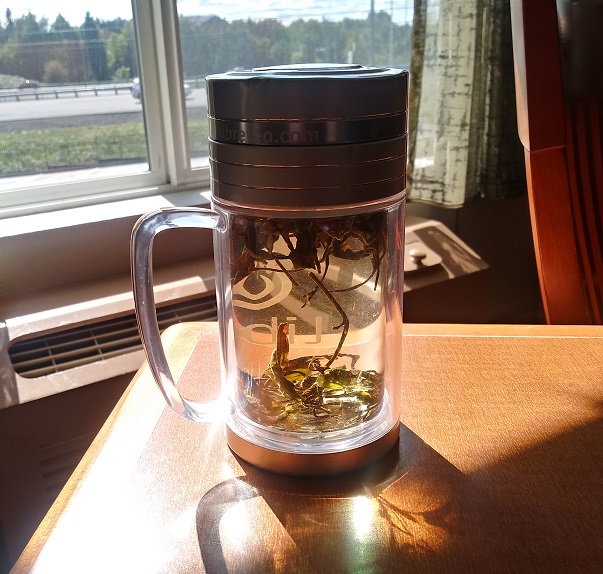
Puts up with grandpa-style neglect just fine, also, it seems.
All in all, solid offerings from a solid garden; one I hope to visit one day.
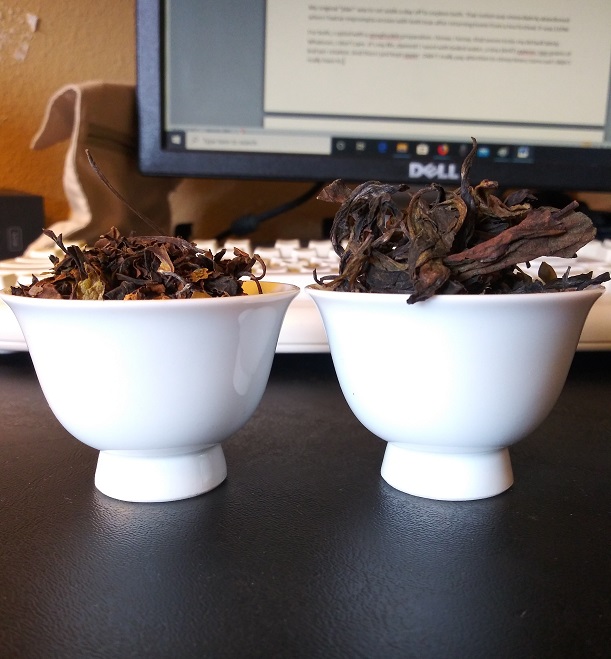
For more information on the Fairhope Tea Plantation and what they do, go to their website HERE.
Leave a Reply to Jessica Cancel reply